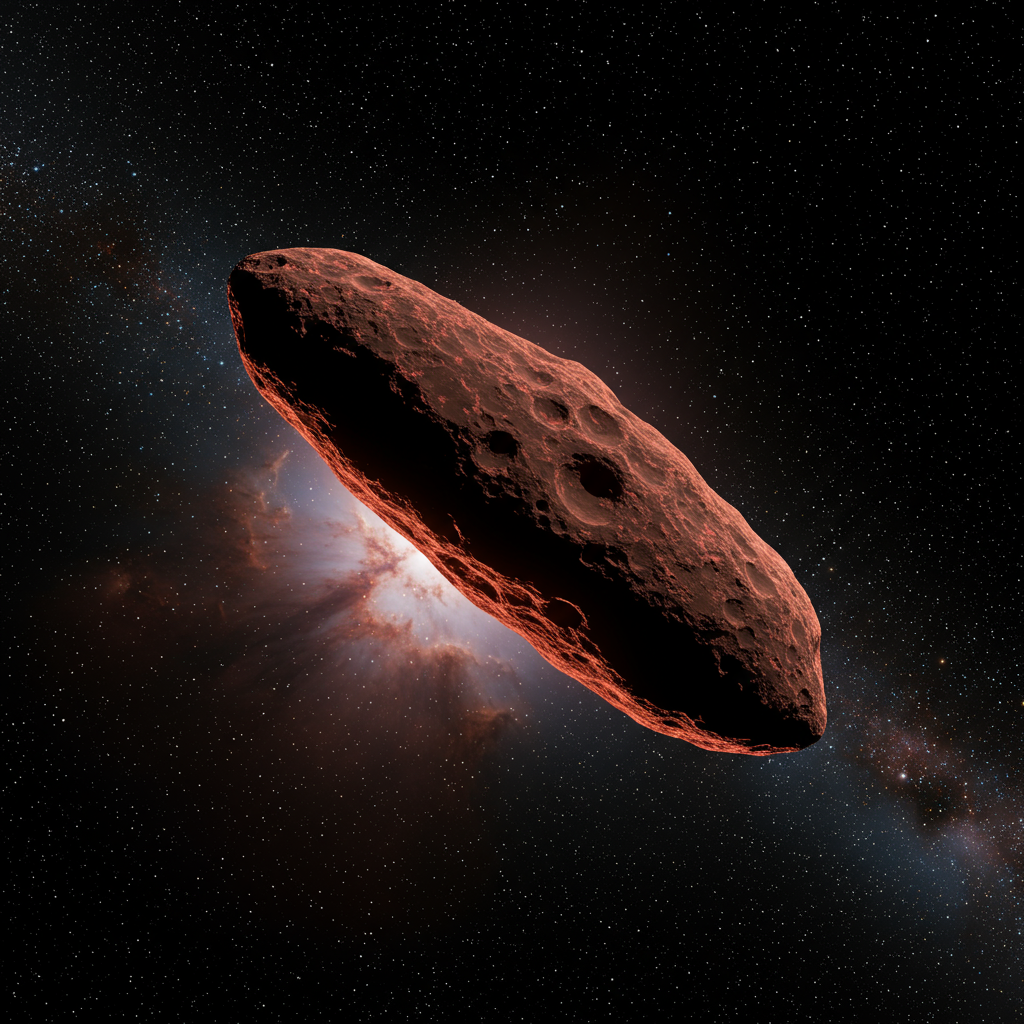Space holds countless mysteries, and occasionally, a visitor from beyond our solar system offers a rare glimpse into the universe next door. Astronomers have recently captured stunning new images of one such object: 3I/ATLAS. This is only the third confirmed interstellar object ever detected passing through our solar system, making its brief appearance incredibly significant for scientific understanding. New images from powerful telescopes are providing the clearest look yet at this enigmatic traveler from another star system.
Witnessing a Rare Cosmic Visitor
The European Southern Observatory (ESO) utilized its cutting-edge Very Large Telescope (VLT) in Chile to obtain remarkable images of the interstellar object known as 3I/ATLAS. These observations represent the most detailed views captured to date as the object journeys inward toward the sun. The VLT specifically employed its FORS2 instrument to record a timelapse of the object’s movement across the night sky. By stacking these images, scientists created the deepest composite view of this interstellar intruder observed thus far. ESO officials confirmed these valuable data were collected on the night of July 3, 2025. The 13-minute VLT timelapse sequence vividly tracks the comet’s motion through the celestial sphere.
The designation 3I/ATLAS is itself noteworthy. The “3I” prefix signifies that this object is the third interstellar visitor confirmed to be traveling through our stellar neighborhood. Prior to 3I/ATLAS, astronomers had only identified two such objects: 1I/’Oumuamua, first spotted in 2017, and 2I/Borisov, discovered two years later in 2019. Each new detection of an interstellar object builds upon our limited knowledge of what lies beyond the solar system’s edge.
The Swift Confirmation of 3I/ATLAS
Comet 3I/ATLAS was first detected just days before the ESO observations. It was initially discovered on July 1, 2025, by the Deep Random Survey remote telescope in Chile. This observatory is part of the NASA-funded ATLAS (Asteroid Terrestrial-impact Last Alert System) telescope network. At the moment of discovery, the object was located approximately 410 million miles (670 million kilometers) away from the sun.
What immediately flagged this object as originating from outside our solar system was its incredibly high speed and the shape of its orbit. Initially cataloged as C/2025 N1 (ATLAS), its nature as an interstellar visitor was confirmed within mere days. This confirmation process was notably faster than for ‘Oumuamua or Borisov. Astronomers determined its orbit around the sun is not elliptical like our planets or typical comets. Instead, it follows a hyperbolic and extremely eccentric path.
The orbital eccentricity of 3I/ATLAS is estimated at an astounding 6.3. This is the highest eccentricity ever recorded for any object observed within our solar system. An eccentricity value greater than 1 indicates an unbound, hyperbolic trajectory, meaning the object is not gravitationally tied to the sun and will leave the solar system. Furthermore, 3I/ATLAS is traveling at roughly 245,000 kilometers per hour. This velocity significantly exceeds the speed needed to escape the sun’s gravity from its current distance, providing strong evidence of its origin elsewhere in the galaxy.
Is It a Comet or an Asteroid? The Ongoing Debate
While the International Astronomical Union (IAU) Minor Planet Center has classified 3I/ATLAS as a comet, its exact nature is still being debated by scientists. Typical comets develop a glowing atmosphere (coma) and often a tail as they approach the sun. This happens when solar heat causes their icy materials to vaporize. However, 3I/ATLAS, despite its classification, has not yet shown definitive signs of a coma or tail in the initial observations.
Some scientists propose that 3I/ATLAS might actually be a large asteroid rather than a comet. Early estimates suggest the object could be quite substantial, potentially around 20 kilometers across. The apparent lack of cometary activity at its current distance from the sun fuels this discussion. For comparison, astronomers have observed significant chemical activity, including powerful carbon monoxide jets, from the distant Oort Cloud comet Bernardinelli-Bernstein (C/2014 UN271), even when it was much farther out, halfway between the sun and Neptune. This highlights the varied nature of icy bodies. Continued observations of 3I/ATLAS as it gets closer to the sun will be crucial to determine if it develops a coma and tail, definitively settling its classification.
Tracking the Interstellar Journey
The journey of 3I/ATLAS through our solar system is a fleeting event. As it continues its inbound trajectory, astronomers anticipate that even better quality images will become available. The object is projected to reach its closest point to the sun on October 29, 2025. At that time, it will be slightly closer to the sun than the orbit of Mars.
Following its solar flyby, 3I/ATLAS will swing back outwards. Its closest approach to Earth is expected in late October 2025. However, unfortunately, the object will not be visible to telescopes or astronomers from Earth at that specific moment. This is because it will be positioned directly behind the sun from our perspective, hidden by the star’s glare. The good news for observers is that 3I/ATLAS is expected to become observable again in December 2025. This will be as it begins its long journey back out towards interstellar space, leaving our solar system behind. ESO and other observatories worldwide plan to continue monitoring the object for as long as possible. These ongoing observations aim to collect vital data that can help scientists unravel clues about its physical structure, detailed chemical composition, and ultimate origin within another star system.
Why Interstellar Objects Matter
The discovery of objects like 3I/ATLAS is incredibly significant for astronomy and planetary science. Each interstellar visitor serves as a direct messenger from another star system. They offer scientists a unique opportunity to study material that formed under vastly different conditions than the planets and bodies in our own solar system. Analyzing their composition could reveal insights into the chemistry of distant protoplanetary disks where other worlds are forming.
These objects also expand our understanding of how material travels across vast cosmic distances. Recent research published in The Planetary Science Journal suggests that interstellar objects might be more common than previously believed. The study proposes they could originate from relatively nearby star systems, such as Alpha Centauri, our closest stellar neighbor. As star systems interact gravitationally, objects can be ejected from their home orbits and sent hurtling into interstellar space.
Our ability to detect these elusive travelers is rapidly improving. New, powerful observatories like the NSF–DOE Vera C. Rubin Observatory in Chile promise to revolutionize the field. The Rubin Observatory, with its wide field of view and continuous sky-scanning capabilities, has already demonstrated its potential by finding thousands of previously unknown asteroids in test runs. Experts predict that observatories like Rubin will dramatically increase the rate at which interstellar objects are discovered. What is currently a rare event may become a more routine occurrence in the future. Studying more of these visitors will provide a richer census of objects beyond our solar system and how they traverse the interstellar medium.
Frequently Asked Questions
What makes 3I/ATLAS an interstellar object?
3I/ATLAS is confirmed as an interstellar object primarily because of its unique trajectory and high speed. Its orbit around the sun is extremely eccentric and hyperbolic, meaning it is not bound by the sun’s gravity. It’s also moving at a speed (around 245,000 km/h) far exceeding what’s needed to escape the solar system from its position. These characteristics strongly indicate it originated from another star system entirely.
When was 3I/ATLAS discovered and observed?
The object now designated 3I/ATLAS was first discovered on July 1, 2025, by the ATLAS telescope network in Chile. Just two days later, on the night of July 3, 2025, the European Southern Observatory (ESO) used its Very Large Telescope (VLT) in Chile to capture detailed images and a timelapse video. These images were released on July 8, 2025, providing the first clear views.
Will 3I/ATLAS be visible from Earth?
3I/ATLAS is currently inbound towards the sun. It will make its closest approach to Earth in late October 2025. However, it will unfortunately be hidden behind the sun from our perspective at that time, making it unobservable. Scientists expect it to become visible again from Earth-based telescopes starting in December 2025 as it begins its journey back out of the solar system.
A Window to Distant Worlds
The passage of 3I/ATLAS through our solar system is a fleeting but invaluable opportunity. As the third confirmed object of its kind, it underscores the dynamic nature of our galactic neighborhood. New images from facilities like the VLT provide crucial data points on its mysterious nature, including the debate over whether it is truly a comet or perhaps a large asteroid. While its closest approach to Earth will occur when it is hidden from view, astronomers around the globe will continue to track this rare visitor. Each observation adds another piece to the puzzle of understanding objects that formed in far-off stellar nurseries. The advent of next-generation telescopes suggests that discoveries like 3I/ATLAS, offering direct insights from other star systems, may become increasingly common, opening new windows into the cosmos beyond our home.




